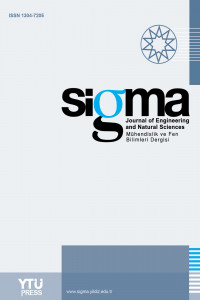Abstract
The main aim of the present study was to use different Hydro-Ecological methods to determine the environmental Water Right in a typical perennial river, the Gadar River, the Urmia Lake Basin, Iran for saving Urmia Lake. The ecological needs of the Gadar River were investigated in two different reaches along the river. Three Eco-Hydrological methods (1- FDC shifting, 2- DRM, 3- Q Equation) were used for the assessment of the river environmental flow requirements. In order to maintain the Gadar River at minimum acceptable environmental status (i.e. ClassC of environmental management), average annual flows of 3.28 , 3.25 m3/s are to be allocated along the river in Naqadeh Bridge and Bahramlu Bridge Stations (located 40 and 18 km upstream from the Urmia Lake), respectively. The potential monthly flow rates are also proposed in order to preserve the riverine lives. For example, in the Naqadeh Bridge Station, the mean annual flow is proposed 3.28 m3/s, and the monthly flows vary from 0.4 m3/s (in Sept.) to 10 m3/s (in May).
Some more important results that have to be noticed are: 1) Evaluation of Environmental flows for each of the ten rivers entering the Urmia Lake has to be evaluated based on the potential flows from the basin and the upstream reasonable needs and water rights; 2) Monitoring the Environmental flows flowing is necessary along the rivers to make sure that the recipient water body, the Urmia Lake, benefits from the right to be restored; 3) By this way, it is anticipated to provide the Urmia Lake with more than 1 billion cubic meters of water from its 10 surrounding rivers.
References
- [1] Abdi R. &Yasi M. 2015Evaluation of environmental flow requirements using eco-hydrologic-hydraulic methods in perennial rivers. International Journal of Water Science and Technology 72 (3), 354–363.
- [2] Ahmadipour Z. &Yasi M. 2014 Evaluation of eco-hydrology-hydraulics methods for environmental flows rivers (case study: Nazloo River, Urmia Lake Basin). Journal of Hydraulics 9 (2), 69-82 (in Persian).
- [3] Dyson M., Bergkamp G., & Scanlon J. 2003 The Essentials of Environmental Flows. IUCN, Gland, Switzerland and Cambridge, UK, 118 P.
- [4] DWAF. 1997White Paper on a National Water Policy for South Africa. Department of Water Affairs and Forestry (DWAF), Pretoria, South Africa.
- [5] GEFC Software:http://iwmi.cgiar.org/resources/models-and-software/environmental-flow-calculators/ (accessed 14 April 2016).
- [6] Hughes D. A. &Hannart P. 2003A desktop model used to provide an initial estimate of the ecological in stream flow requirements of rivers in South Africa. Journal of Hydrology 270, 167–181.
- [7] IWMI. 2004 Environmental flows. In: Environmental Perspectives on River Basin Management in Asia. Vol 1, Issue 1. International Water Management Institute, Colombo.
- [8] Jane Sh. K. 2015Assessment of environmental flow requirements for hydropower projects in India. Current Science 108 (10), 1815–1825.
- [9] McClain ME, Subalusky AL, Anderson EP et al (2014) Comparing flow regime, channel hydraulics, and biologicalcommunities to infer flow–ecology relationships in the Mara River of Kenya and Tanzania. Hydrol Sci J. 59(3-4):801-819.
- [10] Olden JD, Kennard MJ, Pusey BJ (2012) A framework for hydrologic classification with a review of methodologies and applications in ecohydrology. Ecohydrology 5(4):503-518.
- [11] Pyrce R. 2004 Hydrological Low Flow Indices and their Uses. Watershed Science Centre. WSC Report No. 04, Trent University, Peterborough, Ontario.
- [12] Richter B. D., Baumgartner J. V., Braun D. P. & Powell J. 1998A spatial assessment of hydrologic alteration within a river network. Regulated Rivers: Research Management 14 (4), 329–340.
- [13] ShaeriKarimi S., Yasi M. &Eslamian S. 2012Use of hydrological methods for assessment of environmental flow in a river reach. International Journal of Environmental Science and Technology 9, 549–558.
- [14] ShaeriKarimi S., Yasi M., Cox J. P. &Eslamian S. 2014Environmental flows. In: Handbook of Engineering Hydrology.Vol. 3:Environmental Hydrology and Water Management. S. Eslamian (ed.), CRC press, Taylor and Francis Group, LLC, NY 10017, USA, pp. 85-104.
- [15] Shokoohi A (2015) Sensitivity analysis of Hydraulic models regarding hydromorphologic data derivation methods.
- [16] SMADA Software: http://smadaonline.com/DefaultLoggedIn.aspx. (Accessed 14 April 2016).
- [17] Smakhtin V. U. &Anputhas M. 2006An Assessment of Environmental Flow Requirements of Indian River Basins. IWMI Research Report 107. International Water Management Institute, Colombo, Sri Lanka, pp. 1–10.
- [18] Smakhtin V. U., Revenga C. & Doll P. 2004A pilot global assessment of environmental water requirements and scarcity. Water International 29, 307–317.
- [19] Smakhtin V. U., Shilpakar R. L. & Hughes D. A. 2006Hydrology-based assessment of environmental flows: anexample from Nepal. Hydrological Sciences 51 (2), 207–222.
- [20] Tchobanoglous G., Burton F. L. &Stensel D. 2003Wastewater Engineering: Treatment and Reuse. McGraw-Hill Education, New York, USA, pp. 558–565.
- [21] Tennant D. L. 1976 Instream flow regimens for fish, wildlife, recreation and related environmental resources. Fisheries 1, 6–10.
- [22] Tessman S. A. 1980 Environmental Assessment, Technical Appendix E, In: Environmental Use Sector Reconnaissance Elements of the Western Dakotas Region of South Dakota Study. Water Resources Research Institute, South Dakota State University, Brookings, USA.
- [23] Tharme R. E. 2003A global perspective on environmental flow assessment: emerging trends in the development and application of environmental flow methodologies for rivers. River Research and Applications 19, 397–442.
- [24] Tharme R. E. & Smakhtin V. U. 2003 Environmental flow assessment in Asia: capitalizing on existing momentum. In: Proceedings of the First Southeast Asia Water Forum, Vol 2, Chiang Mai, Thailand, November 2003, Thailand Water Resources Association, Bangkok, pp. 301–313.
- [25] ULRP 2014 Urmia Lake Restoration Plan, Sharif University of Technology, Tehran, Iran. http://ulrp.sharif.ir//, (accessed 24 April 2016).
- [26] Zhang Q, Gu X, Singh VP, Chen X (2015) Evaluation of ecological instream flow using multiple ecologicalindicators with consideration of hydrological alterations. Journal of Hydrology 529:711-722.
Details
| Primary Language | English |
|---|---|
| Subjects | Engineering |
| Journal Section | Research Articles |
| Authors | |
| Publication Date | September 1, 2018 |
| Submission Date | April 20, 2017 |
| Published in Issue | Year 2018 Volume: 36 Issue: 3 |
IMPORTANT NOTE: JOURNAL SUBMISSION LINK https://eds.yildiz.edu.tr/sigma/


